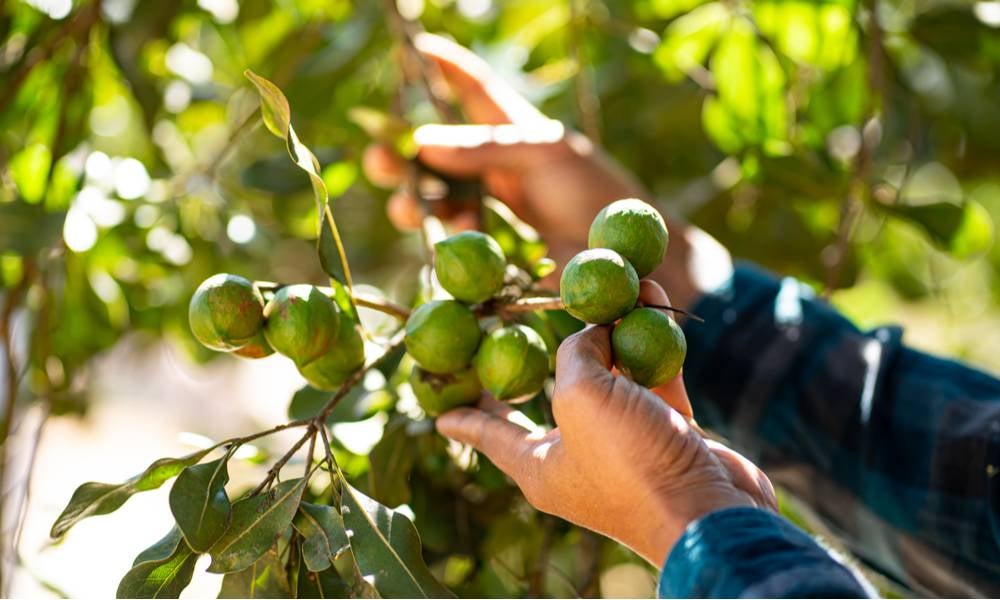Food for thought: how regenerative agriculture is changing Australia’s food industry
Customers are demanding ethical and sustainable food products, and regenerative agriculture offers a self-sufficient solution that keeps costs low and quality high
Australia’s food industry is changing. For customers, there is more convenience and more personalisation than ever before. But the Australian public is also influencing a shift towards sustainability. Regenerative agriculture is just one example of a farming system born from the desire to not only create food but to do so in a way that rehabilitates and enhances land and entire ecosystems, resulting in food that is both ethical and sustainable in the long term. Some embrace regenerative agriculture as a new trend towards sustainable and ethical practices, while others say it is simply good farming.
In the Business of Food – the first episode in The Business of Leadership Podcast Season 2, hosted by AGSM at UNSW Business School – Tristan Harris, Co-CEO of Harris Farm Markets, says the adoption of regenerative agriculture and other sustainable practices across Australia have the potential to change the food industry for the better. Speaking to Nick Wailes, Director, AGSM and Deputy Dean at UNSW Business School, Mr Harris shares his thoughts on how to tackle food waste and other sustainable trends in the food industry.
Also speaking on the podcast is Associate Professor Nitika Garg in the School of Marketing, who discusses the tensions that exist between consumer emotions and the desire to be ethical, and the actions needed to ensure that ethical and sustainable consumption is not a trade-off between principles versus costs.

Sustainability is changing the supply chain
Contrary to popular belief, Mr Harris says sustainability shouldn’t just be about supply chain management. “I think the supermarket industry has made it all about the supply chain, and that's because what they are doing is focusing on keeping their costs down so that they compete with somebody else that does the same thing as them,” he says.
“So, the only way to compete with that is to make sure that your supply chain is better than their supply chain so that you can put it on [the] shelf at a lower price. I think what is lost in that is the customer,” he says. He suggests supermarkets are not giving enough credit to the different types of customers who want quality: some are willing to pay the premium, but some are not, but that doesn’t mean they should miss out on quality products at a fair price.
These customers, who want quality at a fair price, are also driving demand for solutions that aim to curb the carbon footprint of agriculture in Australia and the rest of the world. “I think what we will see in the next couple of years is interesting and clever business models, which allow those externalities to be priced in and allow consumers to either opt-in or to opt-out; or at least, understand all the businesses that are in the supply chain, to understand where those costs are, and what needs to be done to address them,” says Mr Harris.

Regenerative agriculture works with nature, not against it
Regenerative agriculture is one such phenomenal solution and business model. What makes it so remarkable is one simple principle: good farming works with nature and not against it. According to Mr Harris, there’s already a couple of world-class farmers in Australia that are taking some learnings from overseas and then adapting to Australian conditions. And the potential for change is huge. Regenerative agriculture has the potential to minimise the food industry’s carbon footprint. Currently, food production is responsible for roughly 18 per cent of the world’s carbon emissions: regenerative farming can drive this down to virtually zero.
“If done very well, we're going to be able to produce some foods that are carbon positive. We're going to suck carbon out of the atmosphere to produce our food. Now, if we can get to that stage, and there’re products where you get a carbon credit every time you buy the food, that's where we're on a real winner. That's like the imperfect pick scenario, where everyone wins, the farmer wins, the consumer wins, the environment wins. That's the aim,” continues Mr Harris.
This is an ideal solution, not only for the planet but also for customers and farmers, since production can be just as cheap to produce as any other farming method because it doesn’t include any other inputs like chemical fertilisers etc. “And so, we should be able to get down to the point where the food costs the same, and so people will demand that it's grown from regenerative agriculture and that demand will create supply,” says Mr Harris. “At the moment, there's not enough supply and not enough demand, but we're trying to bridge that gap in both directions.”

Regenerative agriculture saves farms from pests while keeping costs down
This all sounds great, but how does regenerative agriculture work in practice? One example of this method that Mr Harris shared can be seen at Byron Bay’s Brookfarm, where the introduction of owls has not only saved macadamia crops, it has also transformed the area’s biodiversity into a regenerated ancient rainforest.
By planting 4000 macadamia trees and over 35,000 rainforest and eucalypt trees, farmers have created a home for native insects and bees, platypus, owls, koalas, turtles, water dragons, snakes, and birds – all maintained by a fully integrated farm system: owls consume up to 1200 rats and mice a year; wasps protect the macadamia trees from being destroyed by small insects and pests; and bees help to pollinate the macadamia, rainforest, and eucalypt trees. Healthy soil is also 60 per cent more effective in capturing carbon than soil on other farms, which in turn help to slow down climate change.
Mr Harris explains: “And so not only have you got less poisoning of all sorts of other animals and increasing the biodiversity on the farm, but you’ve also got lower input costs and a higher yield,” and this is exactly the kind of solution the food industry needs. “Because now, you've got all this subtropical rainforest pulling carbon out of the air, at the same time as providing for a much better commercial solution on a farm,” concludes Mr Harris.
Read more: How is FinTech helping digital entrepreneurs in developing communities?
Should customers bear the choice of ethical and sustainable versus costs?
But cost remains a huge barrier when it comes to engaging ethical sustainable consumption because unfortunately, ethical, and more sustainable products today are often more expensive, says A/Prof. Garg on the podcast. But the problem isn’t necessarily that ethical is more expensive, consumers can’t trust that what they’re paying for is even natural, organic, or as chemical-free as it promises to be on the label. And so, there is a real issue with trust and transparency. As A/Prof. Garg puts it: the “system is stacked against the consumer right now”.
“You are asking the consumer to make a trade-off between their ethics and principles versus cost… Even if I wanted to engage in ethical consumption, I have to pay so much more for it that I can't afford it because there are much cheaper alternatives. So don't give that trade-off. It is a systemic issue that we have to fix,” she explains.

Greater transparency, in labeling and marketing, and better education surrounding sustainable food would help fix this systemic issue. “One of the biggest challenges for policymakers is regulations around ethical consumption because again we know marketers intentionally or unintentionally tend to misuse consumer concerns,” reiterates A/Prof. Garg.
“That's the problem with ethical and sustainable consumption that so much of the onus is on the consumer… what if I don't have enough money to make that trade-off? Then I have that guilt. So, I think the onus needs to shift from consumers to policymakers and the industries.” And if the industry starts to give consumers more ethical and sustainable options, then customers can be assured they are doing the right thing, and demand will naturally go up, she says.
Download the full ‘Business of Food’ episode with Tristan Harris and Nitika Garg here, or listen to more episodes here.
